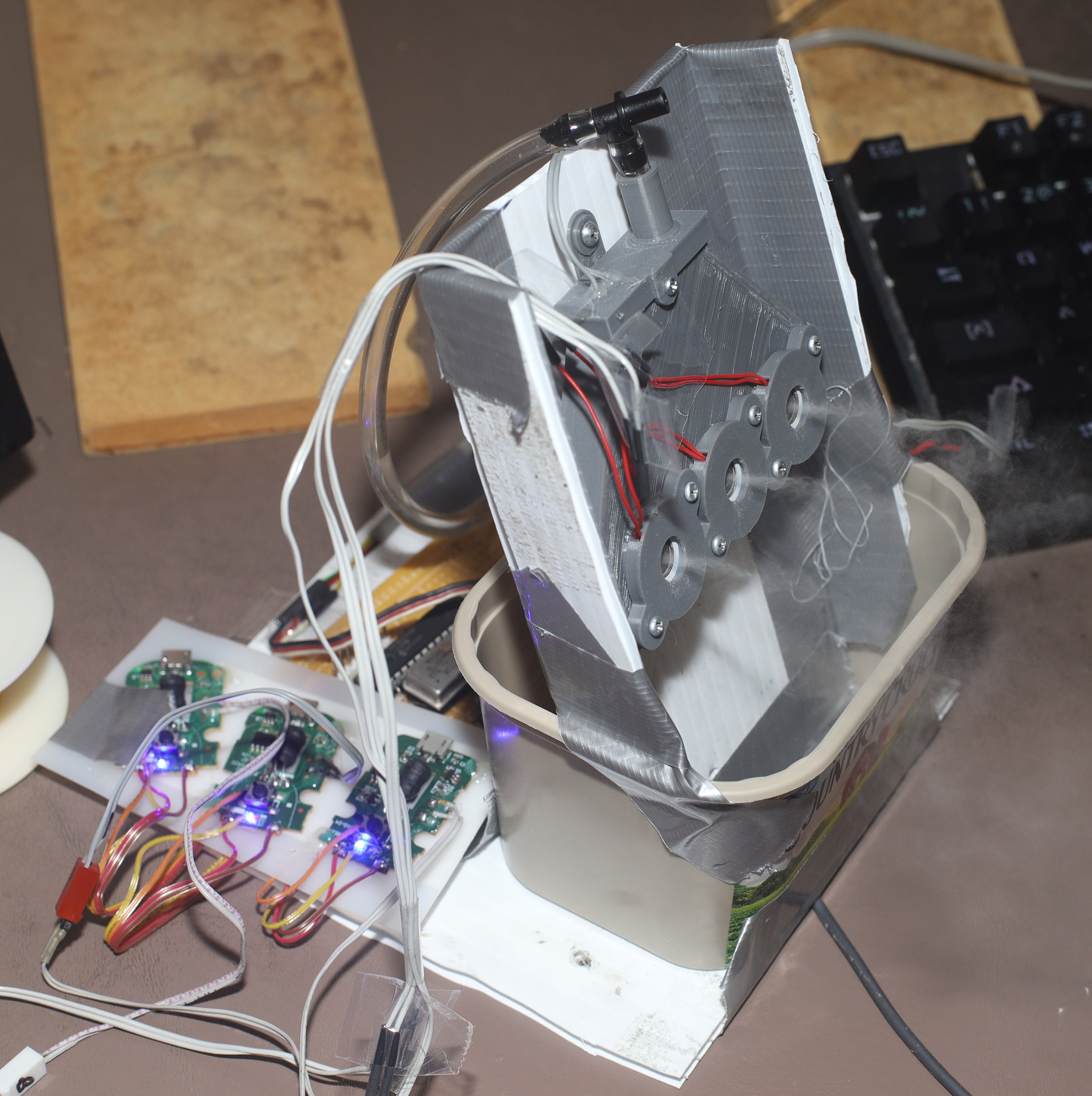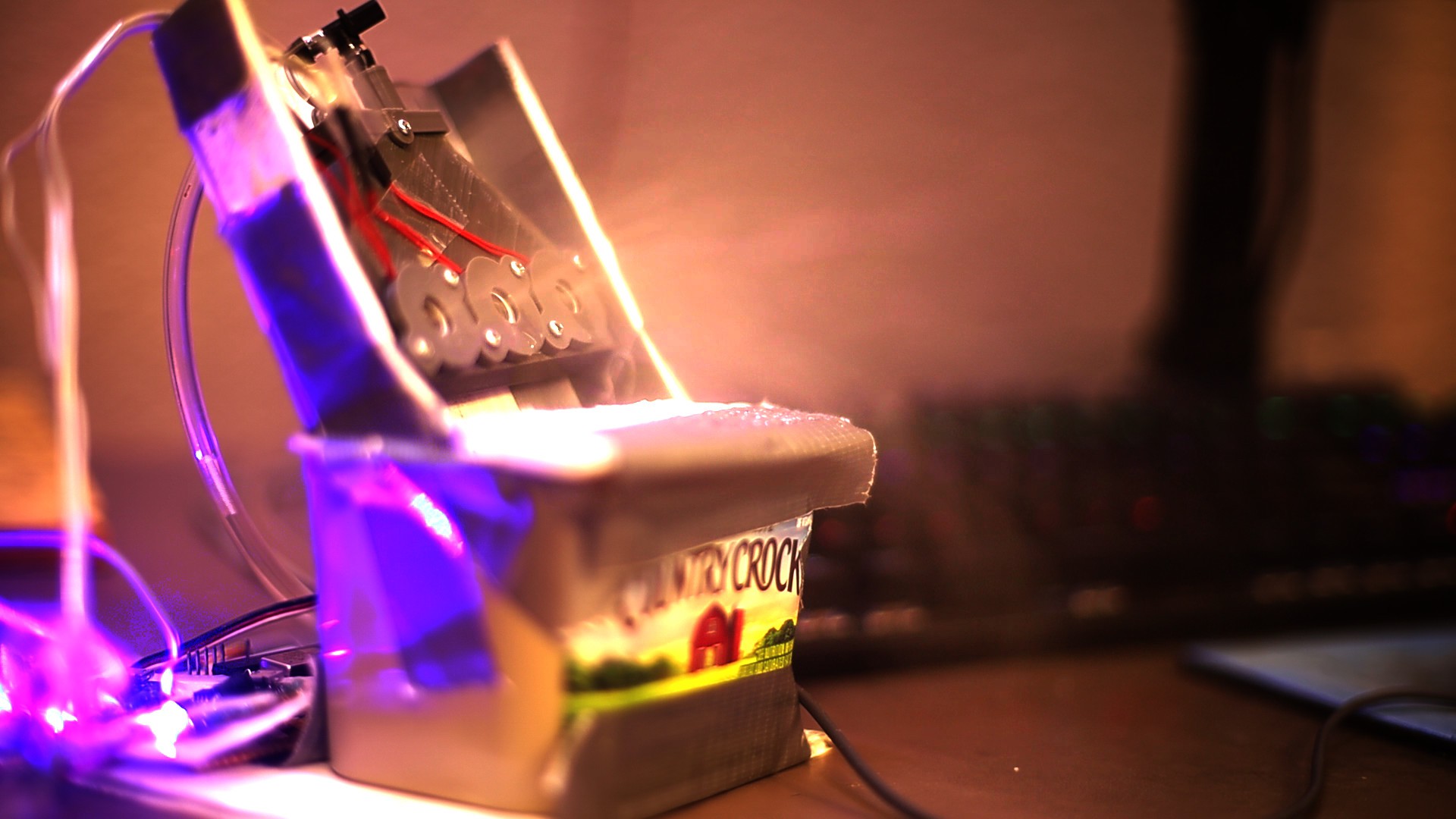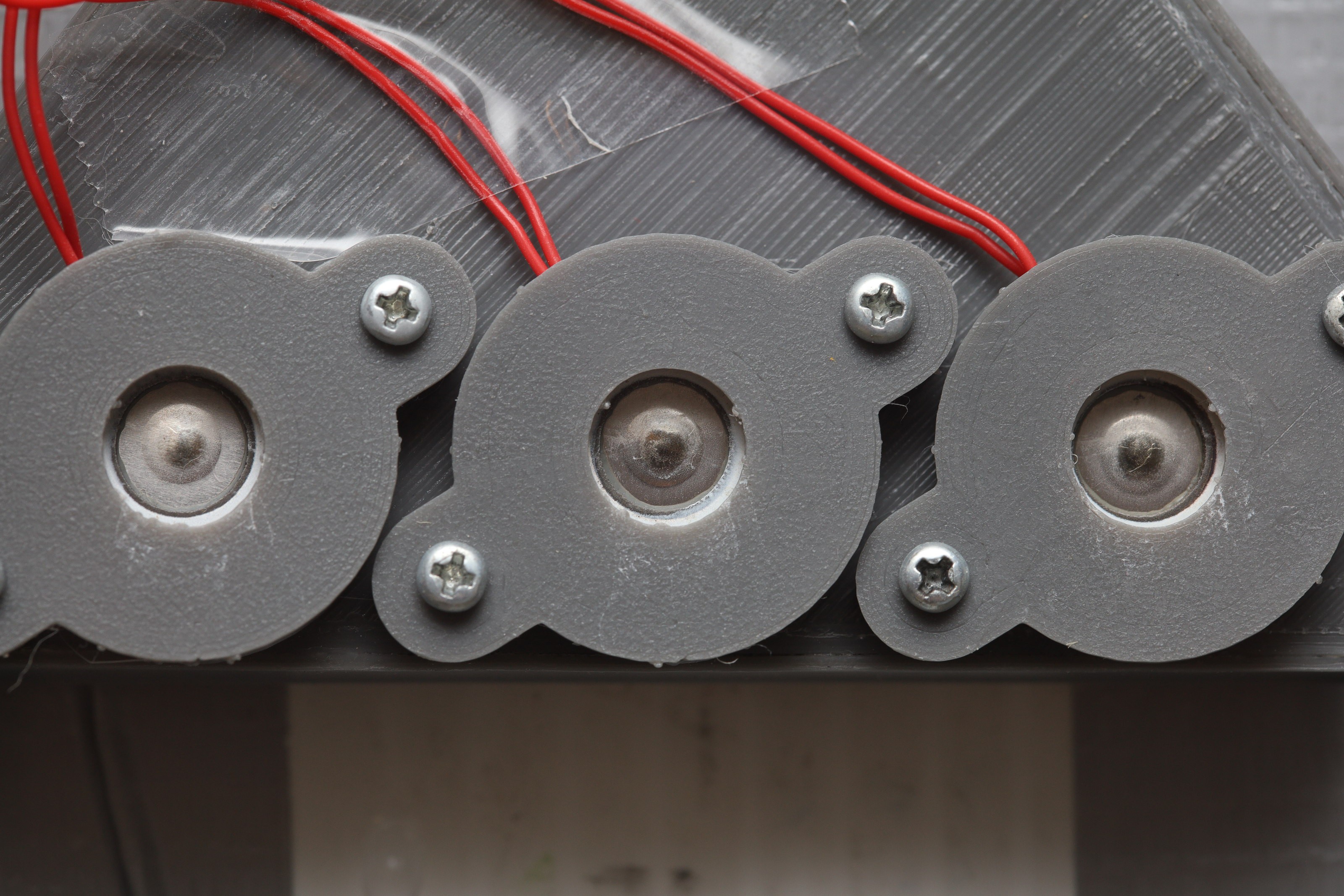The 3 transducer model has proven game changing up to 90F & the transducers haven't died from being run continuously, so work began on a better enclosure.

3D printed enclosures this big are real expensive, so it was back to coroplastic & duct tape.
So the high voltage lines cause the water level sensor to fail high. They have to be separated.
The print statements in the interrupt handler cause PWM to fail even though they're not blocking. Such things happen at 1.25 MIPS. Lions have a strange fascination with running their micros as slowly as possible to use the least amount of power.
It pumps a lot of water with 3 transducers.
It proved easier to not use the switch & just power the thing off. There's a long delay for the ESC to start, but it's proven less hassle. All the software related to shutting down ended up worthless.
The amount of consumables used & the velocity of the water spray got lions wondering if a piezo rocket engine could be built. Anything kinetic is going to be far below ion engine efficiency, but would use a lot less power. It's too fragile to use as a fuel injector.
An enclosure is desperately needed. The mane needs are stabilizing it from falling over, catching overflows, adjusting height & angle. The best stability comes from routing the tube out of the bottom & sideways. The water level sensor still has to be vertical.
It is believed the existing PLA part could stay as it is & be attached to some kind of coroplastic stand. The PLA part needs a small overflow trap under it, with a way to pipe the water to another container. The best place for the electronicals would be behind the PLA part. The stand needs to be weighed down.
More height is better. Too low & it dumps water on the table. Too high & the monitor can't fit over it. Experience has shown it dumps a lot of water overboard. If anything gets in front of the transducers, a puddle soon forms.

No matter what lions do, the mist gets pulled down to the table. It probably needs a fan blowing up.

A lot of scale is building up.
 lion mclionhead
lion mclionhead
Discussions
Become a Hackaday.io Member
Create an account to leave a comment. Already have an account? Log In.